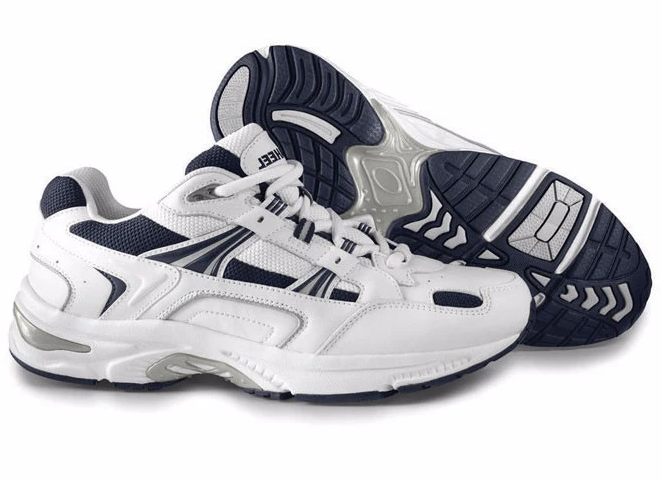5 Helpful Tips to Reduce Swelling in the Feet
Swollen feet occur for a variety of reasons. If you stand on your feet all day, you may notice discomfort and inflammation when you arrive home. Other common causes of swelling in the feet include a chronic health condition called lymphedema, as well as complications from diabetes, pregnancy and medication side effects.

No matter the reasons for your symptoms, you want to feel better fast. How do you reduce swelling in the feet? While you work with your doctor to care for your health, try one of these helpful strategies.
1. Elevate Your Feet
If you’re one of the many people who get inflammation in your feet throughout the day, try to keep them elevated as much as possible.
When you’re not able to elevate your feet while you’re at work, you should rest them as soon as you get home. Lifting your feet above your heart is often the quickest way to reduce the swelling. For proper elevation, a leg rest makes it both easy and comfortable to elevate your feet after a long day. It can also encourage healthy blood flow throughout your legs. Choose a standard leg rest with a cover, models with cooling memory gel foam or an inflatable type to use while you travel.
2. Wear Supportive Shoes
Many causes of swollen feet are medical, but ill-fitting shoes are also known to trigger symptoms. Buying the right pair of supportive shoes can help to reduce inflammation, even if you must walk or stand throughout your day. Look for a shoe with plenty of padding, protective cushioning and a deep toe box. A wider fit may also help to lessen discomfort and make your feet feel a little better.
Your new footwear doesn’t have to be clunky or boring. We have supportive walking and running shoes available in fashionable styles. Choose from athletic sneakers and classic walkers to match with every outfit. No matter which type you choose, you’ll enjoy your favorite activities in wellness and comfort.

3. Use Compression Socks
If you’ve discussed your symptoms of inflammation with your doctor, they may have suggested you wear compression socks. These lightweight and supportive products can help to ease the effects of swelling. They’re also popular because they’re comfortable to wear at home but fashionable enough to wear out of the house.
The benefits are in the compression technology, which gently squeezes target areas such as your lower legs, ankles and feet in the right places to avoid the fluid buildup which leads to swelling. Your medical provider can help choose the right compression socks, or you can call one of our experts in compression hosiery to find the right level of support for your needs.
4. Enjoy an Epsom Bath
Epsom salt has been used for thousands of years as a remedy for everything from reducing stiffness to easing swelling throughout the body. The benefits are in its main active ingredient, magnesium sulfate, which is a natural inflammation reducer. Indulge in a relaxation session by having a full-body Epsom salt bath in your tub. You can also make an Epsom foot soak.
Fill your bathtub or container with warm water. Add ½ cup of Epsom salt to the liquid. Place your feet inside the mixture and soak them for 30-45 minutes. Try this remedy a couple of times per week for best results. As an added bonus, it’s an excellent stress reliever. Find it in soothing scents like eucalyptus and lavender.
5. Take a Walk
When your feet are swollen, the last thing you want to do is exercise. However, getting your legs moving can help to move the fluid that’s building up in your limbs. If your inflammation is severe or causing you pain, take it easy and rest. When you feel better, set out for a short walk.
A daily stroll will help with the circulation in your legs. This is because of the repetitive movement during your walk allows blood to travel back from your feet to your heart. It’s also a great activity for your overall health. Start slow and then increase your length or intensity as you gain strength and stamina.

Enjoying Less Swollen Feet and Enhanced Foot Health
It may take some time to ease your symptoms or mend your health condition. Care for yourself and follow your doctor’s instructions as you review each of the tips on this list. By incorporating a few of the above activities into your weekly schedule, you are taking positive steps to ease uncomfortable swelling and enhance your wellness.
Kaki Zell - Vice President of Sales, Marketing, eCommerce at Legs-4-Life LLC Kaki holds a Bachelor of Science degree in Business Administration and Management from Virginia Polytechnic Institute and State University. She’s been working in the medical device industry for over 11 years and currently serves on the Board of Directors for the Greensboro Science Center.
Written December 2016 | Page Last Updated January 2022
Sources
Healthline. “Foot, Leg, and Ankle Swelling: Causes, Treatment and Risks” https://www.healthline.com/health/foot-leg-and-ankle-swelling
Mayo Clinic. “Magnesium Sulfate” https://www.mayoclinic.org/drugs-supplements/magnesium-sulfate-oral-route-topical-application-route-route-not-applicable/before-using/drg-20088513
Medical News Today. “Lymphedema: Symptoms, Treatments, and Causes” https://www.medicalnewstoday.com/articles/180919
Web M.D. “Epsom Salts Bath: How to Take One, What It Does” https://www.webmd.com/a-to-z-guides/epsom-salt-bath
